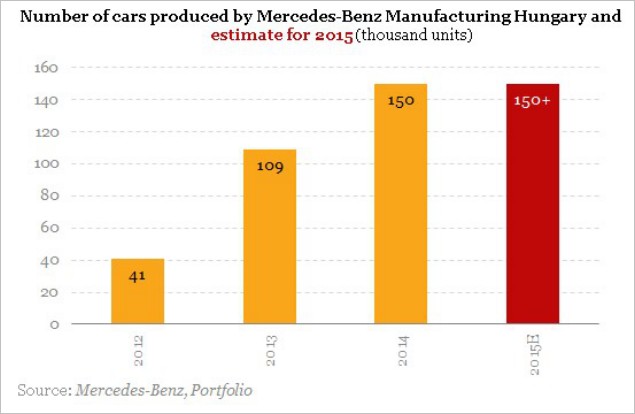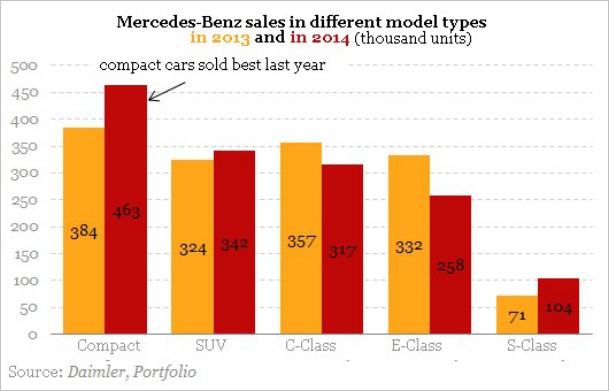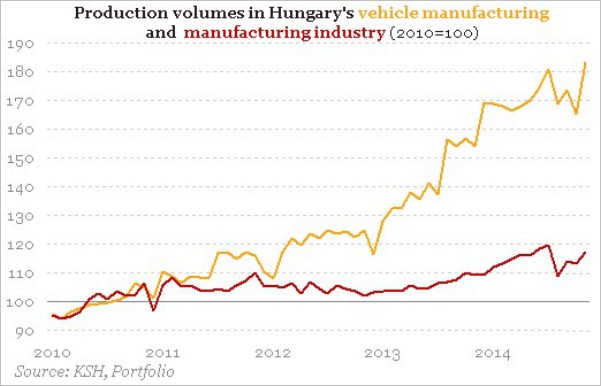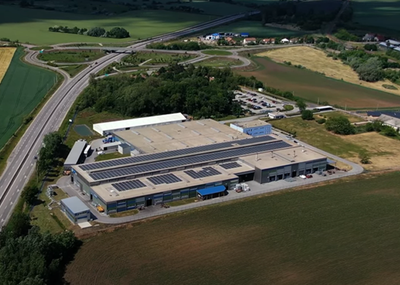Several specific industry policy decisions have been reached at a meeting between German Chancellor Angela Merkel and Hungary’s Prime Minister Viktor Orbán in Budapest on Monday, business news portal vs.hu has reported on Tuesday, citing local and German economic sources. Among other things, it is foreseen that BMW will build a plant in Hungary and Daimler will further increase its manufacturing capacities at its local Mercedes-Benz factory. Both decisions would be rational considering that the Bavarians already have a solid background of suppliers here, while the compact cars of Mercedes-Benz are so popular that they can hardly keep up with the orders.
Merkel was here
German Chancellor Angela Merkel’s few-hour visit and meeting with PM Orbán has not passed without a trace. According to leaked information, they have reached a host of industry policy agreements, which - among other things - are expected to give a boost to the flagship of Hungary’s industry, car manufacturing.
According to vs.hu’s sources, BMW is considering setting up a production unit in Hungary. The rumour has been circling on the market for months now, so the report probably does not come out of the blue for many. It has also gained confirmation that after weighing the pros and cons for quite some time Daimler has finally decided to further upgrade its Kecskemét-based plant in order to meet rising global demand for compact Mercedes-Benz models.
Ghost seems to be solidifying
Passenger car production restarted in Hungary in the early 1990s. Germany’s Opel, Japan’s Suzuki and later other German producers, Audi and Mercedes-Benz launched assembly and manufacturing in the country. There was a fifth producer, though, a sort of a 'ghost’ that was almost invisible but contributed greatly to GDP production. And it was no other than BMW.
Via its suppliers BMW contributes to the employment of about 10,000 employees in Hungary. That is the number of people that work for businesses supplying the Bavarian company - exclusively or not - with parts or complete structural units. For example, Hungarians manufacture aluminium components for running gears, wiring looms and complete steering systems for BMW. The value of these amounted to about one billion euros in 2011, which corresponded to one third of regional supplies - from the Baltic States to Southeast Europe.
Csaba Metál, an aluminium high pressure die casting foundry located in Békéscsaba, supplies the complete gear box for the BMW i3 electric car model, the serial production of which started in September 2013 in Leipzig, Germany. It has an order for 190,000 units that will need to be provided over a seven-year period. Csaba Metál added 100 jobs over the last two years and its headcount has exceeded 660 by now.
In view of this, we would not be surprised if BMW decided to launch car production too in Hungary. There is no information on the potential location(s) of the factory.
It is a relatively strong argument in favour of BMW bringing production to Hungary that there is a cut-throat competition between the three rivalling Germany luxury car manufacturer - all of them want higher sales volumes. And BMW cannot afford the luxury of falling behind in this race if it wants to maintain its leading role.
There have been rumours that the area of Miskolc, northeast Hungary, could be optimal for BMW’s new plant, but the company is also faced with a shortage of qualified staff, just like its competitors. Thus it is not by chance that certain plants recruit suitable staff from 100-150 kilometres afar or even from abroad.
Mercedes could expand too
Following Chancellor Merkel’s visit it is becoming every clearer that Daimler could build a new plant to go with its existing Mercedes-Benz production unit in Kecskemét. A few weeks ago, Thomas Geier, managing director of the Mercedes factory in Kecskemét, said Daimler’s investments in the Kecskemét plant total EUR 1 billion. Its construction absorbed EUR 800 m and developments have never stopped since then. By the end of last year, headcount grew to around 4,000.
Daimler has started the production of the new Mercedes CLA Shooting Brake model in Hungary. Head of production Markus Schäfer told a press conference on 20 January at the Kecskemét plant that this is the second model that is manufactured nowhere else but in this facility.
Responding to a question Thomas Geier said that as they added a third shift in Hungary, the plant manufactured 150,000 cars in 2014 and this year it will produce even more, although he did not specify.
The family of compact cars will be expanded and Kecskemét will be assigned a special role in the increased output, Geier said. He also noted that the number of Hungarian suppliers has risen to 32 from 17 at the start of production.
Local press speculated in 2012 that the expansion of the Kecskemét-based Mercedes plant would boost the facility’s capacity to 300,000 units per year from 150,000, but Daimler confirmed only that it "can expand the production line".
In the summer of 2013, local news portal index.hu reported that the planned expansion coudl be put off by at least one but possibly by several years. One of the two independent sources claimed the reason for the delay was the uncertain economic policy environment in Hungary, whereas the other said weak European demand was the reason behind the decision. Daimler denied the speculation to Portfolio.

Some interpreted Geier’s remarks as if he inadvertently spilled the beans, arguing that in order to churn out more than 150,000 cars annually Daimler would need a capacity boost, i.e. a new plant in Kecskemét. This speculation was not just plucked out of the air. A plan to increase the production capacity at the Hungarian Mercedes-Benz factory has been on Daimler’s table for years and it was never realized because the feeble performance of the European car market years ago. In the current environment, however, (rising demand in Europe, highly popular compact cars) such an expansion may be justified and a new facility would fit just fine on the plot Daimler had purchased earlier.
Compact cars are already the backbone of sales
Compact models of Mercedes-Benz greatly contributed to the record sales the company reported for last year. Two of these were the B-Class and CLA models, the latter of which is produced exclusively in Hungary. The company managed to boost sales in this segment by nearly 25% year on year, partly because customers gave a warm welcome to the new GLA model. The breakdown of sales at the different segments also reveal that compact cars had the greatest run in 2014 both in terms of the volume of sales and the number of cars sold. In view of this it is no surprise that the Germans want to step up production in this particular segment. Having the new Mercedes model manufactured in Hungary is definitely great news for the local industry.

Germany could give a great boost
If the paper’s information are correct, Hungary’s manufacturing sector can be given a new momentum for years to come. New car production capacities have already been the driving force in the sector. The weight of this segment within total industry is around 25%.
At this juncture, however, information is scarce as to what size of new capacities we are talking about, but in the case of Mercedes doubling its output is not impossible, considering the empty plot that is waiting to be put to good use in Kecskemét.
If BMW built a major manufacturing base here, Hungary’s industrial production would rise extremely fast over the next few years. True, experts estimate added value from car production at a low level of around 20%, but this could get higher if local suppliers are added.
Rising output in car manufacturing has a subdued impact on the state budget given the large state benefits and subsidies. Still, it would be one of the biggest investment news of the last few years if the above developments (by BMW and Daimler) were carried out, as the current production capacities have almost been maxed out. Such added output would also have a tangible impact on gross domestic product too. But it may be an even bigger success if a new factory were set up in a location where it could meaningfully improve the area’s labour market conditions. The location is an interesting issue also because, in view of previous experience, qualified labour is not a given at all when it comes to developments in car production.

Source: portfolio


